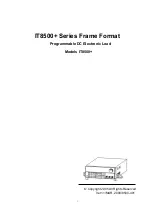
The fast tripping time (minimum trip time is 5ms when SOM output module is used) of
the low-impedance differential protection function is especially advantageous for
power system networks with high fault levels or where fast fault clearance is required
for power system stability.
All CT inputs are provided with a restraint feature. The operation is based on the well-
proven RADSS percentage restraint stabilization principle, with an extra stabilization
feature to stabilize for very heavy CT saturation. Stability for external faults is
guaranteed if a CT is not saturated for at least two milliseconds during each power
system cycle.
The advanced open CT detection algorithm detects instantly the open CT secondary
circuits and prevents differential protection operation without any need for additional
check zone.
Differential protection zones in the IED include a sensitive operational pickup. This
sensitive operational pickup is designed to be able to detect internal busbar ground
faults in low impedance grounded power systems (that is, power systems where the
ground-fault current is limited to a certain level, typically between 300A and 2000A
primary by a neutral point reactor or resistor). Alternatively this sensitive pickup can
be used when high sensitivity is required from busbar differential protection (that is,
energizing of the bus via long line).
Overall operating characteristic of the differential function in the IED is shown in
figure
Section 2
1MRK 505 370-UUS A
Application
36
Busbar protection REB670 2.2 ANSI
Application manual
Summary of Contents for RELION REB670
Page 1: ...RELION 670 SERIES Busbar protection REB670 Version 2 2 ANSI Application manual ...
Page 2: ......
Page 24: ...18 ...
Page 40: ...34 ...
Page 72: ...66 ...
Page 102: ...96 ...
Page 266: ...260 ...
Page 272: ...266 ...
Page 290: ...284 ...
Page 432: ...426 ...
Page 542: ...536 ...
Page 552: ...546 ...
Page 553: ...547 ...











































